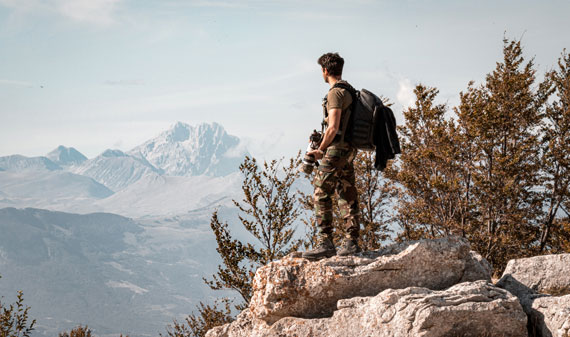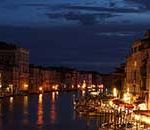This article is a review of landscape photography tips and techniques I’ve covered before. Have you wondered why I’m going over previously covered ground? There are several reasons.
First, I wanted to have all these landscape photography tips and techniques listed together so you can more easily make a checklist. I hope you’ve done that. In the excitement of the moment, it’s easy to forget important and rather obvious techniques.
Second, it’s good to review from time to time, because statistically, only about 15 percent (or fewer) of you will read any particular article I write. So actually, this is new material for 85% of you.
Third, I keep repeating the important points, because there is a story about a preacher. He wasn’t a dynamic speaker, but he did OK. One Sunday, he did a fire and brimstone sermon that got a lot of favorable comments from the parishioners as they left the church.
The next Sunday, he used exactly the same sermon. Word for word! This drew some quizzical looks, but no one mentioned it to him.
The next Sunday he did the same sermon–word for word–again! And the next, and the next!
Finally, thinking he was losing his mind, someone asked him if he was aware that he was doing the same sermon over and over. He said that he was well aware of what he was doing, and he intended to keep doing the same sermon until his parishioners started following the advice.
How can I dispute that? Enough said. Here are today’s landscape photography tips:
Time of Day

Photo by JD Hascup; ISO 100, f/11, 0.5-second exposure.
Light–with a portrait, we have total control. We can adjust the light levels, we can place our light where we want it, we can use modifiers, like umbrellas, scrims, diffusion materials, gobos and so on. We can do pretty much anything we want to get the image our mind has conjured up.
With landscape and cityscape photography, we are pretty much stuck with what nature provides us. There’s not much we can do. Or is there? With some planning, we can almost guarantee a stunning shot.
In an outdoor, landscape setting, there isn’t much we can do to modify or adjust the light, but we can become hyper aware of what light does at various times of day and in various weather conditions.
First and foremost, to be successful as a landscape or cityscape photographer, you have to have a desire to lose sleep. If you want to start capturing those dramatic landscape photos with all the stunning colors, there’s really only two times of day to shoot: dawn and dusk.
But for a photographer, dawn and dusk are a bit more expanded than you may think. About twenty minutes before the sun first peeks over the horizon in the morning there is a “false” dawn. This time of day will give you those intense cobalt blue colors you see in contest winners but haven’t been able to see in nature. As the sun gets closer and closer to the horizon, the colors start to get pinker. The colors you see at dawn are not the same as the colors you see at sunset. (They are more red and orange.)
Drag yourself out of bed a couple hours before dawn so that you will have enough time to grab a cup of coffee and make your way to your predetermined spot, get set up, and start shooting during the false dawn.
See what I mean about needing a desire to lose sleep? Most of your friends and camera club competition will be snoring away while you “get the shot”.
Angle of Light

Photo by Giuseppe Milo; ISO 100, 67-second exposure.
In addition to the terrific colors, you also get great light angles. Think of the last photo you saw of a body builder. Where was the light? I’d venture to guess that it was to the side. Actually, about 90 degrees to the camera-model axis.
This glancing side light causes heavy shadowing around the muscles, making them look more defined and actually larger. The light causes some specular highlights too, which makes the difference between highlight and shadow even more striking.
Now think of your landscape or your cityscape as a muscle bound model. The shadows caused by the glancing sunlight will help define and emphasize the shapes.
Composition
Next look for an interesting scene. Use foreground elements to draw the eye into the photo. Use the rule of thirds, leading lines, diagonals and other compositional techniques to draw the viewer’s eye.

Photo by Giuseppe Milo; ISO 50, f/22.0, 3.2-second exposure.
Throw in a few clouds to reflect the sun’s colors and add some visual interest to the sky, and you will be well on your way to winning photo contests.
Another compositional element to consider is the horizon, make it level! What is the most important element in your landscape or cityscape photo? Is it the sky? If so, put the horizon on the lower third of the shot. Is it the ground? Put the horizon in the upper third.
While there are times that placing the horizon in the middle is the right call, they are rare. Make sure you have a specific reason to do so.
Last but not least, make sure your photo has a “star”. What attracted you to the scene? Make sure you accent that feature and drive the viewer’s attention to it. Don’t make the mistake of trying to make the entire scene equally important. You need a star.
Sharpness

Photo by ™ Pacheco.
Use a tripod! When shooting landscapes–particularly in the predawn and post sunset times–you will need a long exposure! (Creating an acceptable depth of field requires shooting at minimal apertures, which means long shutter speeds.) Don’t even think of trying to get a contest winner by shooting handheld. It won’t happen.
Use the mirror lockup feature if your camera has one. Most of the better DSLR cameras do.
For the ultimate in photo sharpness, in addition to locking up the mirror, use a timed shutter release. It may seem like a bit of overkill, but these sharpness techniques can and do make a big difference.
Filters
Photoshop has the ability to do remarkable things, but there are limitations. Stop trying to “fix” photos in Photoshop. Get it right in the camera and use PS for some minor tweaks.
First, make sure you have a circular polarizing filter for each of your lenses. This eliminates glare and polarizes light. What this means is that you will get far more intense and saturated colors, and the clouds in the sky will “pop”.
Next, have a selection of neutral density filters. At least have filters that will give you 1, 2, and 3 extra stops–more if you can afford them. There are tons of uses for ND filters, but getting that silky, cotton candy effect in flowing rivers and waterfalls is the most common. You WILL want to do this–be ready.
Finally, add a couple graduated neutral density filters. This will help with your sunrise and sunset photos where the ground and the sky have dramatically different light levels.

Photo by Kemal ATLI; ISO 100, f/6.3, 1/200-second exposure.
Consider getting some colored graduated filters, too! I recommend at least having a tobacco colored filter. It is the most popular to add or intensify sunset colors.
In the excitement of the moment, it is easy to forget some of these admittedly basic but essential landscape photography tips and techniques.
Here is your assignment: make up a checklist (of these and any other landscape photography tips and techniques you can think of), have it laminated, and stick it in the side pocket of your camera bag.
Every time you are shooting, you can pull out your landscape photography tips and techniques checklist and won’t forget anything. Finally you will have the landscape photography techniques needed to let your artistic side shine through.
I challenge you to try USING these landscape photography tips and techniques this weekend, and prove me wrong!
About the Author:
Dan Eitreim writes for OnTargetPhotoTraining. He has been a professional photographer in Southern California for over 20 years. His philosophy is that learning photography is easy if you know a few tried and true strategies.
Like This Article?
Don't Miss The Next One!
Join over 100,000 photographers of all experience levels who receive our free photography tips and articles to stay current:







Thank you for the tips :)
Your addressing the ND filter issue was a piece of critical education. Appreciated that.